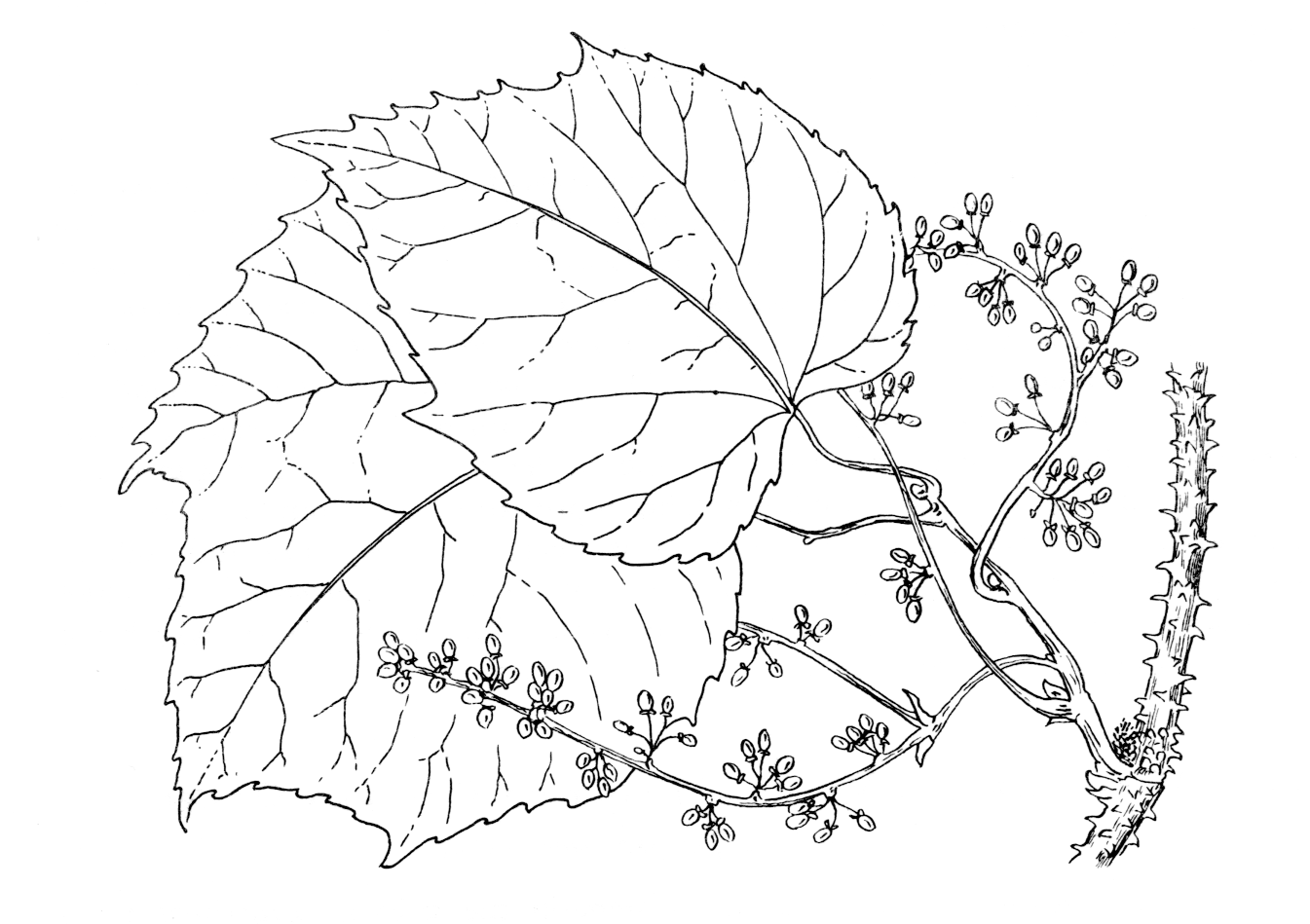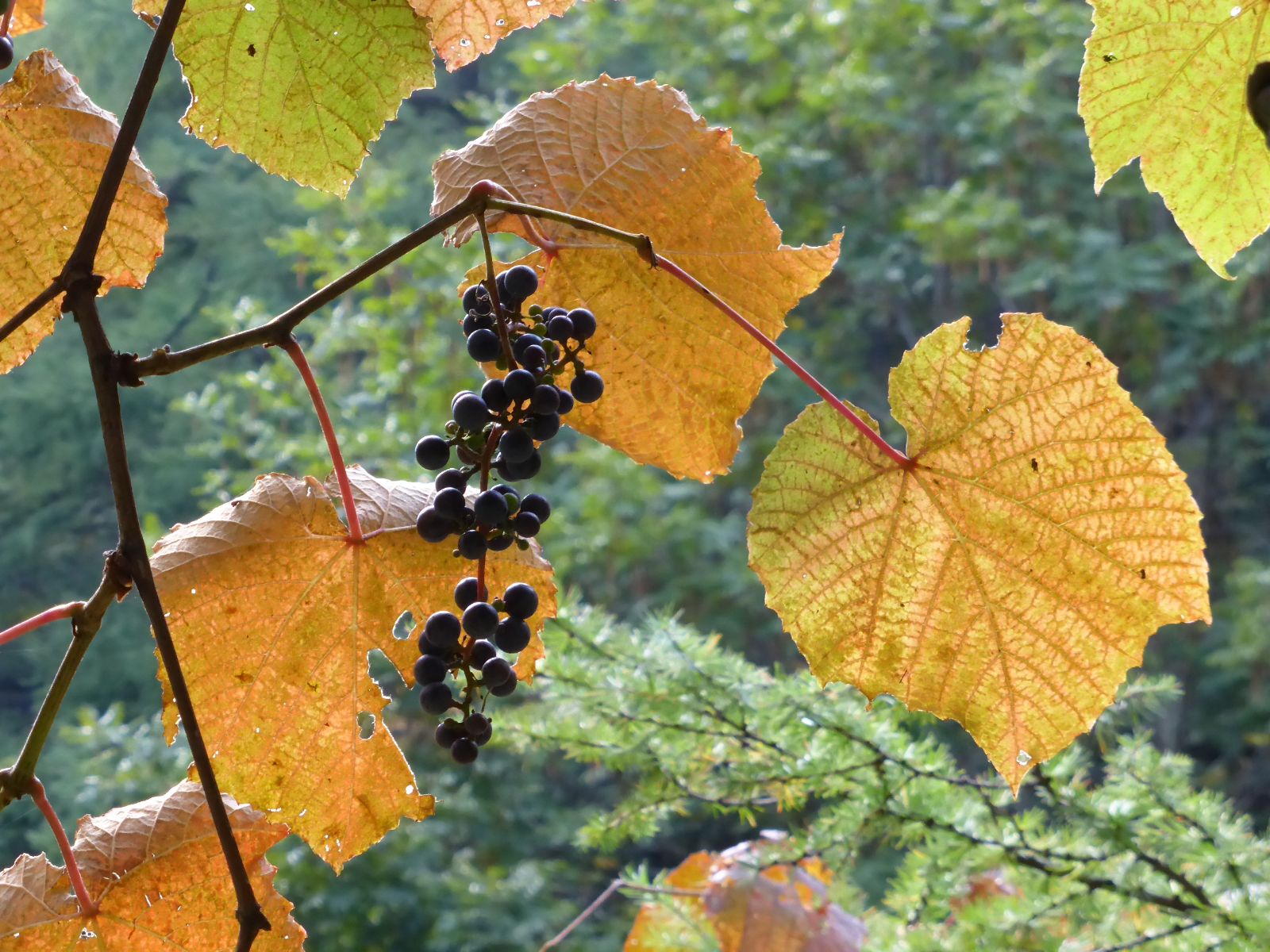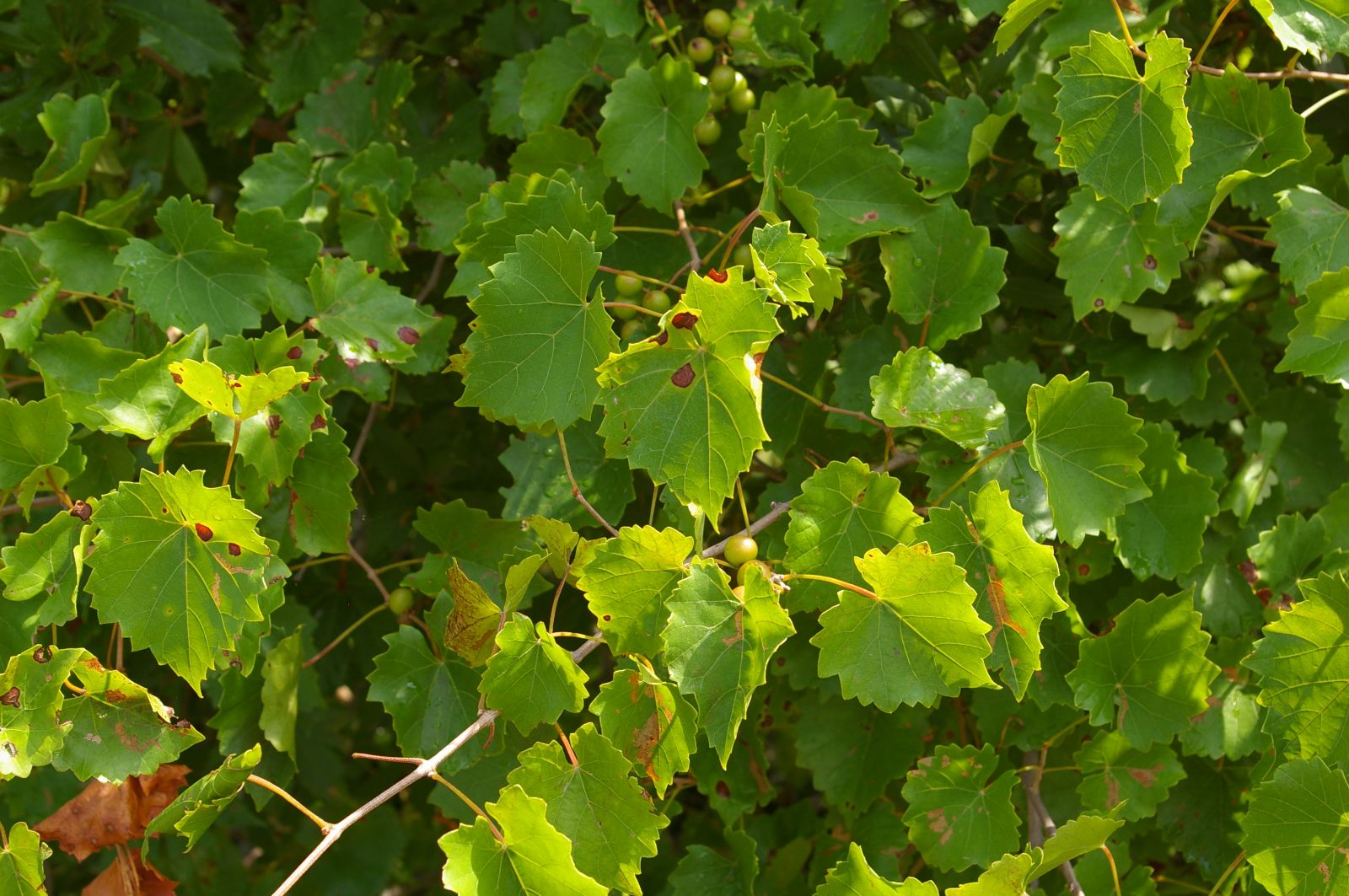Vitis
Credits
Article from Bean's Trees and Shrubs Hardy in the British Isles
Recommended citation
'Vitis' from the website Trees and Shrubs Online (treesandshrubsonline.
Family
- Vitaceae
Common Names
- Vine
Species in genus
- Vitis aestivalis
- Vitis amurensis
- Vitis argentifolia
- Vitis californica
- Vitis candicans
- Vitis coignetiae
- Vitis cordifolia
- Vitis davidii
- Vitis flexuosa
- Vitis labrusca
- Vitis monticola
- Vitis piasezkii
- Vitis quinquangularis
- Vitis riparia
- Vitis romanetii
- Vitis rotundifolia
- Vitis rupestris
- Vitis thunbergii
- Vitis vinifera
- Vitis wilsoniae
A genus of tendril-climbers, rarely shrubs; tendrils without adhesive tips, borne opposite the leaves, but often lacking at every third node. Bark on older branches dividing into long fibrous strips. Leaves mostly simple, toothed and more or less lobed (partly compound in V. piasezkii). Flowers in panicles, polygamo-dioecious (flowers male on some plants, bisexual on others). Calyx minute. Petals five, united at their ends into a sort of cap, which is shed as the flower expands. Stamens five, alternating with five nectar-bearing glands. Style short. Fruit a berry; seeds two to four, pear-shaped, pointed at the base.
There are about fifty species of Vitis, confined to the northern hemisphere, with a maximum development in N. America. Some of the American species, and even more their hybrids, have acquired immense economic importance in wine-growing areas as root-stocks for the grapevine, being resistant to the ‘phylloxera’ root-louse, which made its appearance in France about 1867 and at one time threatened the very existence of the European wine-growing industry. Some of the American species, notably V. labrusca, have parented vineyard varieties widely cultivated in N. America outside California. But as ornamentals the American species are rare in gardens. Better known are those from China and Japan grown for their fine foliage and autumn colour, such as V. coignetiae and V. davidii. The most important species in the genus Vitis is of course the European grape vine V. vinifera. This species would hardly fall within the compass of this work were it not that it has produced a few varieties grown chiefly for ornament.
The chief difficulty with vines is the provision of suitable support. Best of all, perhaps, is a pergola on which the shoots can be trained and pruned back annually as much as is necessary. They can also be trained up posts, when, if the shoots are allowed to hang loosely, they are very elegant. Pruning is much the same as that given to grape vines under glass. The young shoots are shortened back once or twice during the summer, and then cut hard back in December or January to one or two buds (later pruning causes bleeding). The same pruning should be given to plants grown on walls. Whole trees or large shrubs can be given up to them, over which they can ramble at will, and this, approaching nature as it does, shows the more vigorous ones at their best. Vitis coignetiae is often grown in this way, but needs a large tree for its support.
Some species such as V. coignetiae are difficult to increase except by layers or seeds, but most of the true vines can be propagated by cuttings, or preferably by ‘eyes’. An eye consists of a single bud of the previous summer’s shoot, with about half an inch of wood at each side, cut slanting fashion, so that the cut surfaces almost meet beneath the bud. These are made in early spring, each one placed on the surface of a small pot of sandy soil, the bud only uncovered, then put in gentle bottom heat. Cuttings are made one or two joints long, at the time the leaves are falling in autumn, and put under a handlight or in a cool frame.
For other species treated under Vitis in previous editions, see Ampelopsis, Cissus and Parthenocissus.




